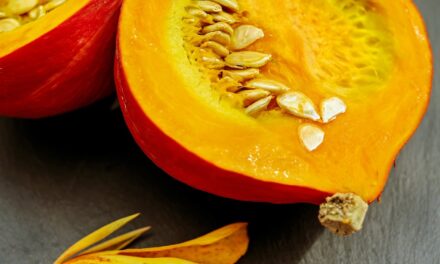Body pain can become a persistent issue, impacting quality of life and hindering everyday activities. While occasional aches may be manageable, chronic or frequent body pain calls for a holistic approach. Ayurvedic remedies, rooted in ancient Indian medicine, offer natural ways to relieve body aches, reduce muscle tension, and promote an overall sense of well-being. Let’s dive deeper into how Ayurveda can help manage body pain with lifestyle modifications, dietary adjustments, and simple home treatments.
1. Avoid Sour Foods
Sour foods like tomatoes, vinegar, lemons, and apple cider vinegar may increase nerve sensitivity, potentially worsening body pain symptoms.
Why It Helps: Sour foods are known to aggravate the Vata dosha in Ayurveda, which is closely linked to body aches and joint pains. By reducing sour foods, you may notice decreased muscle stiffness and improved comfort.
Action Tip: Limit sour foods for at least a week and observe any changes in pain levels. This can reduce the likelihood of nerve-related pain and ease discomfort.
2. Limit Raw Foods
Raw foods can be challenging to digest, especially for those with a Vata or Kapha body constitution. According to Ayurveda, poorly digested food can lead to toxin buildup (ama), which contributes to pain and inflammation.
Why It Helps: Raw foods lack the warmth and moisture required for easy digestion, particularly in cooler or dryer seasons. Cooked or steamed vegetables and warm soups can ease digestion and prevent bloating, dehydration, and associated pain.
Action Tip: Incorporate lightly cooked foods into your diet, especially if you notice bloating or stiffness after raw meals.
3. Garlic Oil Massage
Massaging with garlic-infused oil is a traditional Ayurvedic remedy for pain relief, providing both warmth and anti-inflammatory benefits.
How to Prepare:
- Heat a few garlic cloves in sesame, mustard, or coconut oil until golden brown.
- Let the oil cool until warm but comfortable to touch, and massage it onto areas with pain.
Why It Helps: Garlic contains natural anti-inflammatory compounds, which, when combined with heat, penetrate the muscles and soothe inflammation.
Action Tip: Massage the affected areas, then relax in a sunny spot or warm area for 20 minutes. This will enhance the oil’s effectiveness, promoting relief from muscle and joint pain.
4. Hydrate Regularly
Dehydration is one of the subtle causes of muscle cramps and body pain. Staying hydrated is crucial for overall body function, as water helps lubricate joints and maintain muscle elasticity.
Why It Helps: Proper hydration flushes out toxins, reducing muscle stiffness and improving flexibility. Drinking enough water daily can also prevent the buildup of lactic acid, which contributes to muscle soreness.
Action Tip: Aim to drink at least 3 liters of water daily. Herbal teas like ginger or turmeric tea can also add an anti-inflammatory boost.
5. Warm Compresses and Fomentation
Heat therapy is a simple and effective method to relieve muscle and joint pain. It increases blood flow to the affected area, loosens stiff muscles, and reduces inflammation.
Why It Helps: Heat helps dilate blood vessels, enhancing circulation and easing pain. Regular use of warm compresses is especially helpful for chronic pain in areas like the lower back or shoulders.
Action Tip: Apply a warm towel or heating pad to the painful area for 15-20 minutes, once or twice daily.
6. Light Exercise and Walking
Gentle exercise, such as walking or stretching, is beneficial for reducing body pain and stiffness. Light movement improves blood circulation and helps release endorphins, the body’s natural pain relievers.
Why It Helps: Regular movement prevents stiffness and ensures muscle flexibility. Exercise stimulates circulation, delivering oxygen and nutrients to muscles and joints, which can relieve pain.
Action Tip: Incorporate a daily 15-20 minute walk, ideally in the morning sunlight. Simple stretching exercises can also help, especially for the neck, shoulders, and back.
7. Turmeric and Ginger in Your Diet
Both turmeric and ginger are celebrated in Ayurveda for their anti-inflammatory and pain-relieving properties. Adding these spices to your diet can provide lasting relief from pain and support general wellness.
Why It Helps: Turmeric contains curcumin, a natural anti-inflammatory agent, while ginger reduces inflammation and relaxes muscles. These spices work synergistically, reducing body pain when consumed regularly.
Action Tip: Start your day with warm turmeric tea or add a pinch of turmeric and ginger to your meals. For stronger effects, try a mixture of 1 tsp turmeric, 1/2 tsp ginger, and honey in warm water daily.
8. Prioritize Restful Sleep
Quality sleep is essential for muscle recovery and pain management. Inadequate rest can exacerbate body pain, leaving muscles tight and tense.
Why It Helps: Sleep allows your muscles to heal and regenerate, which is crucial for reducing pain. Ayurveda recommends maintaining a consistent sleep schedule and avoiding stimulating activities before bed.
Action Tip: Create a relaxing nighttime routine and consider drinking a warm herbal tea, such as chamomile, to aid relaxation and improve sleep quality.
9. Reduce Caffeine and Processed Foods
Highly processed foods and excess caffeine can dehydrate the body, reduce nutrient absorption, and increase inflammation.
Why It Helps: By reducing these foods, you may lower your body’s overall inflammation level, which directly affects pain. Natural foods rich in vitamins and minerals can also strengthen muscles and joints, preventing aches.
Action Tip: Focus on whole foods, like fruits, vegetables, whole grains, and nuts, to support overall health and reduce body pain.
Additional Tips for Pain-Free Living
- Regular Deep Breathing: Reduces stress, which can help alleviate tension-related pain.
- Magnesium-Rich Foods: Magnesium helps muscle relaxation and prevents cramps. Try bananas, leafy greens, and nuts.
- Mindful Eating: Take your time while eating to improve digestion, which can reduce toxin buildup (ama), a contributor to body pain in Ayurveda.
By following these Ayurvedic remedies and lifestyle changes, you can naturally alleviate body pain, enhance flexibility, and experience overall wellness. Make sure to consult with a healthcare provider before making significant changes, especially if you have chronic pain or other health concerns.





